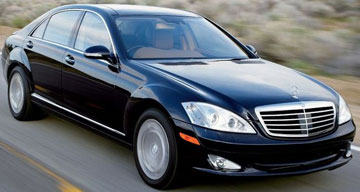Crosswind Stabilisation is one in the long list of safety features found in the Mercedes Benz S-Class.
Its an addition to the Active Body Control (ABC) and the stability control
systems. As its name suggests this feature keeps your vehicle on it's intended path during crosswinds which is
known to cause your vehicle to unintentionally drift.
|
|
Whenever a gust of wind hits your vehicle while travelling at certain speeds (usually highway speeds) the
wind applies more force or weight to the suspension of one side of your
vehicle This inequality of force on one side pushes your vehicle in the direction the wind is travelling and this
push can send the vehicle in another lane or off the road.
There are sensors in the S-Class that detects the crosswind in mere milliseconds and utilizes systems such
as the yaw rate and stability control to provide counter measures and keeps the S-Class
on its intended path. The sensors are constantly operating but only apply the crosswind stabilisation at speeds
of 50mph and above. |
 |
The sensors for crosswind stabilisation detects the inequality of force on the
air suspension of the S-Class on the left or right side of the vehicle during certain circumstances when crosswinds
affects cars the most. High speed cornering also creates an inequality of weight on the suspension as explained in the
anti roll bar webpage but the sensors will not act on this.
|
Crosswind Stabilisation is a new feature that was introduced on the 2006 (W221) S-Class and so far has remained
exclusive to the Mercedes Benz marque. Crosswind stabilisation is standard on the S-600 and is an option on the
rest of the S-Class line up.
|
|
|
|





